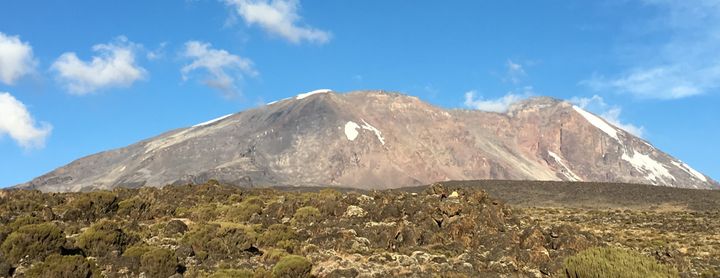
Kilimanjaro is the tallest freestanding mountain in the world at 19,341 feet
Climbing Mount Kilimanjaro is a once-in-a-lifetime experience. Myriad tour operators and dozens of well-intentioned websites give you boatloads of information. Sure, you know to dress in layers and don a headlamp. But when push comes to shove and you’re awakened for a midnight ascent to 19,341 feet, what are other critical success factors? After having climbed Kilimanjaro, I have five hacks for intrepid souls:
1. Bring sunscreen and sunglasses: For a midnight hike? Yes. Hikers set out for the summit around midnight, and temperatures are often below freezing. We ended our all-night hike to the summit just before 7 am, reveling in the sunrise from 19,340 feet. However, just like Newton’s discovery of gravity, what goes up must come down. Hikers are often caught off guard that the subsequent hike back to base camp is in intense daylight. At that sky-high altitude, the sun is fiercer and skin burns more easily. Thus, packing a proper SPF sunscreen, coverage, and sunglasses is a must on summit night.
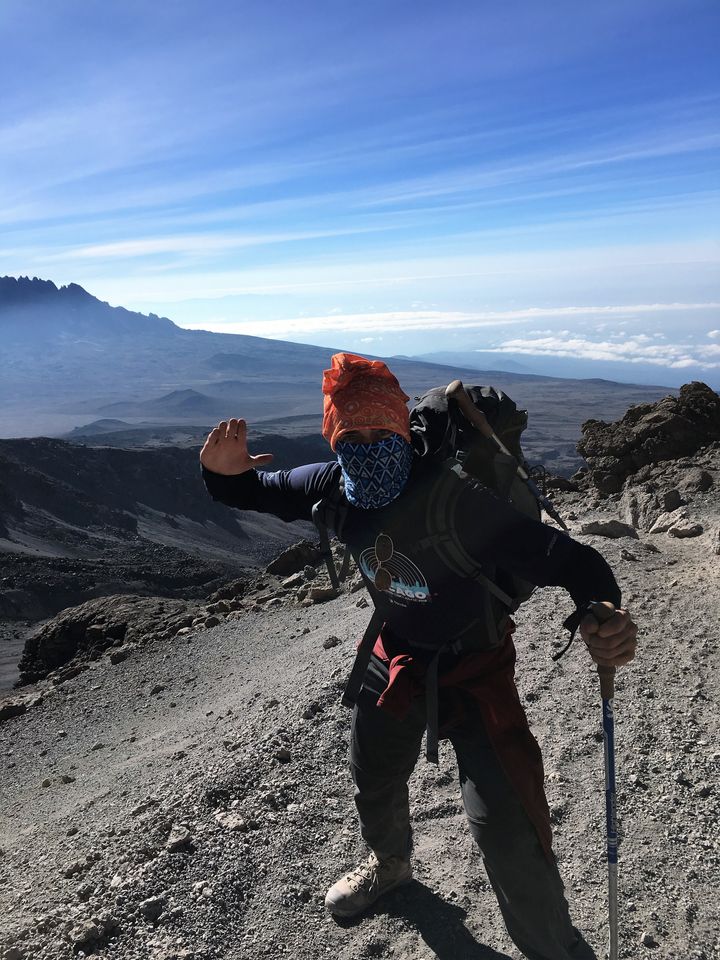
Is that a hiker or a mountain ninja? Either way, he is protected from the sun
2. Hydrate with boiling water: Before your team leaves for the summit, fill your water bottle or Camelbak with scalding hot water. The sub-zero temperatures ensure that the water will quickly cool down. Meanwhile not having your water freeze will help you stay hydrated. Trust me, the water will cool rapidly. One other nugget is to transport your water bottles upside down. Ice forms at the top of any water body, and so if your liquids do freeze, an upside down bottle will ensure that the liquid is next to the opening. Camelbak users should blow any unused water out of the drinking hose back into the pouch after each sip as the water will freeze and make more drinking impossible and potentially crack the hose.
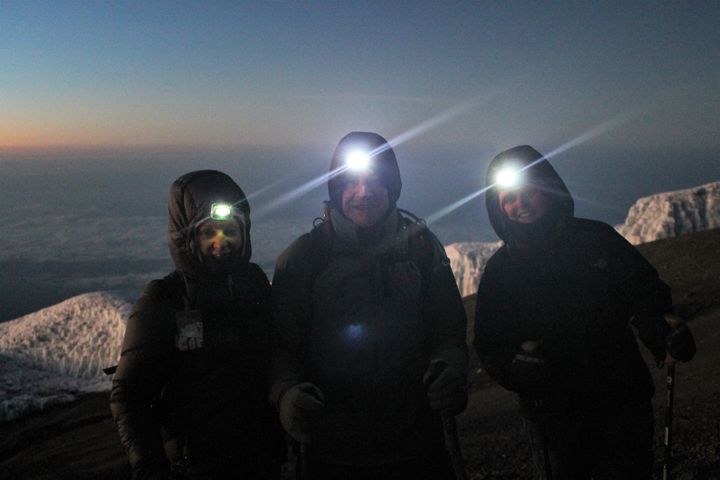
Make sure headlamp batteries are fresh, because they last shorter in chilly conditions
3. Carry trekking poles to save your knees on the way down: Some hikers love them, others hate them. An oft-quoted 1999 study in The Journal of Sports Medicine demonstrates that trekking poles can reduce compressive force on the knees by up to 25 percent. Getting back to Base Camp take 2-3 hours of steady downward slopes. But, instead of returning for another night at Base Camp where the day began, most hikes continue down the mountain to sleep at a lower altitude. After two hours back to Base Camp, my knees endured another four hours of continuous descent to our final Mweka camp for the evening. That’s six hours of down, down, down, and your toes and knees will start barking. Trekking poles will mitigate the intensity, and ibuprofen may help.
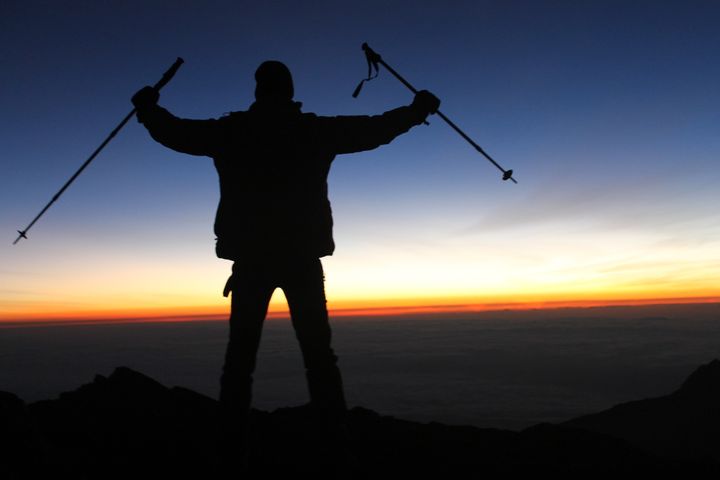
This hiker is elated to have trekking poles for the descent
4. Build mental and emotional, not just physical, stamina: Set your expectations appropriately – to summit Mount Kilimanjaro means a long night of slow hiking uphill. Especially during peak season, there will be hundreds of other hikers attempting the same goal, from individuals to groups of 50 people. Large groups are inherently slower than smaller, more nimble groups. We took a break approximately each hour, and set a slow but focused pace. I had anticipated being able to turn a 6-hour hike into four hours, and so I really had to dig deep to find the resolve and determination to push myself forward. Every time I looked up, others’ headlamps were still just as distant up the mountain. The top never seemed to get closer. Thankfully I have pushed myself past my limits before. Summit night was one of my most challenging climbs ever. Push yourself into uncomfortable territory prior to hiking Kili and gut check your response.
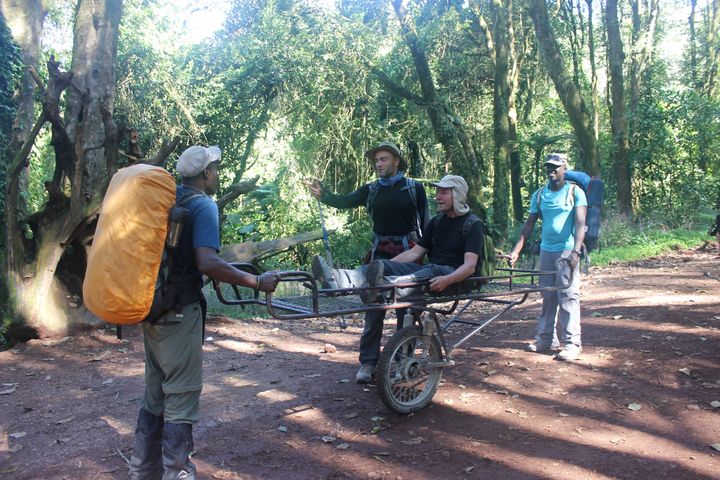
With no hospitals on Kilimanjaro, it is a bumpy ride down on a wheelbarrow stretcher
5. Obey your guides (especially for altitude sickness): You have paid a lot of money and invested many days of training. When it comes time to summit, you won’t want to be told that you cannot go any further. However, the best guides are well-trained in altitude sickness symptoms and are able to make judgment calls about an individual’s ability to proceed. Guides constantly inquired: “How are you feeling? Sipping water? Eating occasional snacks? Warm enough? Any headaches?” We had one man who had trained for months to summit, but an hour into the hike he couldn’t reliably answer questions, he was nauseous, and his heart was beating out of his chest. One of the guides escorted him back to Base Camp, which may have saved his life. Listen to your body and be truthful to the guides and yourself. It just may save your life.

The rooftop of Africa: Mount Kilimanjaro
These Kilimanjaro summit hacks are ones that I found essential. Did you find them helpful? What other ‘tricks of the trade’ would you recommend?
Louis Amoroso is a popular leadership coach who assists clients through 1:1 coaching, as well as small-group transformational journeys with his company, TravelLight. He splits time between Chicago and Los Angeles. Connect with him at louisamoroso@travellight.world.
